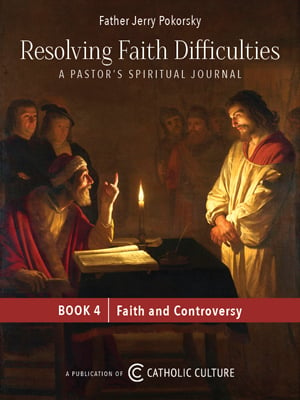Talk to your kids about porn!
By Thomas V. Mirus ( bio - articles - email ) | Aug 01, 2014 | In Reviews
Parents typically find it easy to talk to their young children about the dangers of drugs, alcohol, peer pressure and “stranger danger.” So why is it that so many parents are so afraid of or uncomfortable with talking about sex? It could be because sex is the most personal of all of these topics; I suspect it is because most parents are themselves not fully at peace with their own sexuality. Regardless of the reason, I know many young adults who say that their parents failed them by talking to them about sex too little, too late, or not at all.
This is simply not viable in today’s hyper-sexualized society. In fact, it’s always been foolhardy to try to protect kids by keeping them ignorant – they will find out, if not from their parents, then from some less desirable source. But today a new challenge for parents may come up before it is even time for “the talk” – and that is talking to one’s children about pornography.
Given that most kids will see some form of pornography before age 13, and many before they hit puberty, it doesn’t matter how uncomfortable parents feel with this topic at this point. Failing to prepare children to avoid this danger – and they will face it if they haven’t already – is throwing them to the wolves.
Fortunately parents don’t have to figure out how to do this by themselves, as there are more and more resources available to help parents talk to their kids about porn. One such resource is the recently-published Good Pictures, Bad Pictures, by Kristen A. Jenson and Gail A. Poyner, the latter of whom is a licensed psychologist. The book can function as a mere guide or food for thought, but it is designed to be read with a child, taking the form of a conversation between a boy and his mother.
Good Pictures, Bad Pictures is illustrated, fairly short and explains things sensitively in a way a child can understand – indeed, one of its strengths is that it is appropriate even for children who don’t yet know the details of sex. It explains the concept of addiction, as well as the difference between the “thinking brain” and the “feeling brain.”
The book also provides some practical steps that kids can take to reduce harm in the event that they end up being confronted with a pornographic image. Best of all, the conversation presented in the book is frank without being uncomfortable, and cautionary in a way that will not make children feel afraid or ashamed.
Good Pictures, Bad Pictures will not be everyone’s ideal approach, as every parent and child is different and mileage may vary, as the expression goes, but it’s certainly a good starting point for a conversation about pornography. The bylines on the cover, which refer to “porn-proofing” and “inoculating” one’s kids, should be taken with a grain of salt, as no method is foolproof. All the same, this is a conversation that needs to be had, and the authors should be lauded for broaching such a difficult and fearful topic.
All comments are moderated. To lighten our editing burden, only current donors are allowed to Sound Off. If you are a current donor, log in to see the comment form; otherwise please support our work, and Sound Off!








